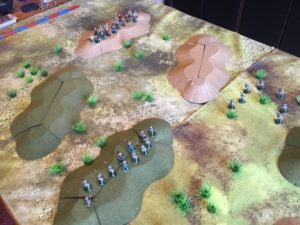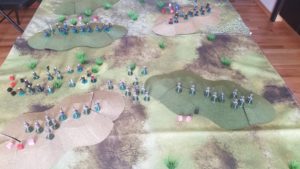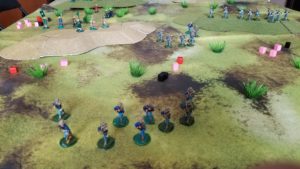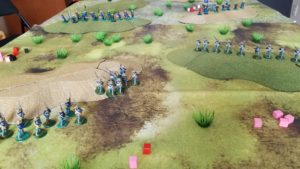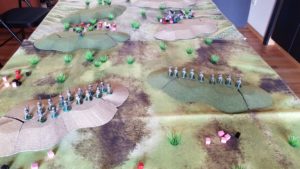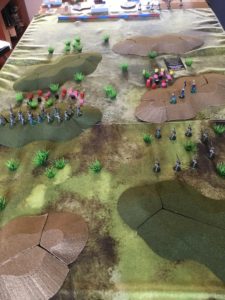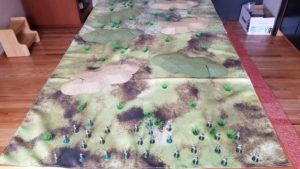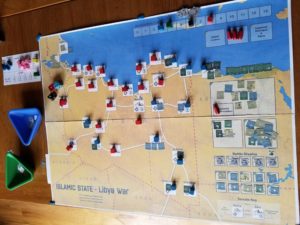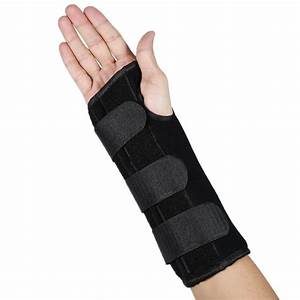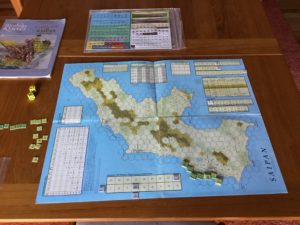The game set up, along with the initial dispositions of both forces, is shown in the following photo. The Japanese flag represents the amphibious landing at Kota Bharu. Placement of the Japanese convoy, battleship and cruiser squadrons is determined during the Random Events Phase. Force Z is represented by the British flag in Singapore. The index card and colored blocks are used to keep track of weather and ship damage.
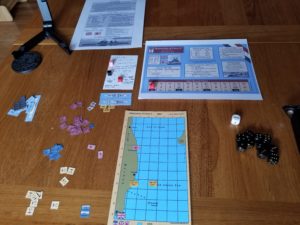
For the first three turns, Force Z moved east of the Anamba Islands, then turning north towards the landing. The Japanese were unable to locate Force Z, which was maintaining radio silence in the overcast weather, until it attacked the Japanese battleships (7 VPs) at night (Turn 4). I couldn’t find anything specific in the rules, so I decided Japanese surface units appearing during a turn couldn’t move, also. Despite hitting the Japanese ships, no damage was inflicted.
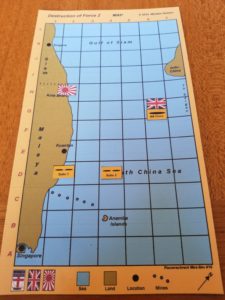
After this inconclusive encounter, the British sailed at flank speed towards Kota Bharu to bombard the the landings. The Japanese were still unable to locate Force Z, and could not prevent the destruction of their offshore convoy which had appeared off Kota Bharu during the Random Events Phase (Turn 5).
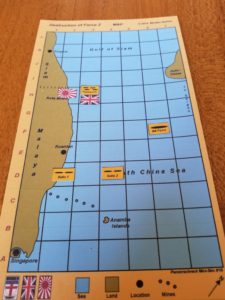
After this success, the British steamed south towards Singapore, breaking radio silence to request RAF air cover (Turn 6).
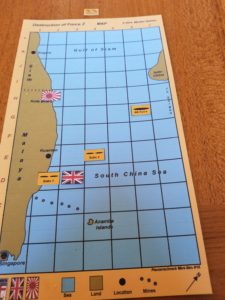
At this point, the Force Z commander decided take advantage of darkness (Turn 7), steaming north to again engage the VP-rich Japanese battleships. The Japanese cruisers entered the northern part of the map during the Random Events Phase.
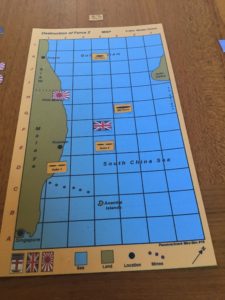
Force Z moved into the Japanese square, forcing a surface engagement. It was here that British luck ran out, as the Japanese search was a success, and no RAF fighter cover appeared to help fight off a massive level bomber and torpedo bomber attack.
The following photo shows how I handled the “tactical” aspect of the game.
Both British ships were in the square, so each can be attacked by bombers. D6 rolls determine the number of attackers and what ship(s) they attack. The rolls indicated a mixed force of 12 torpedo and 25 level bombers, all of which concentrated on the Prince of Wales. The first attack was by the level bombers. Each ship has a maximum of 10 d6 anti-aircraft rolls. These rolls either eliminate attackers, or are indicate to hit modifiers. Bombers need a modified roll of 10 to score a hit. A further damage die roll is made for each hit. The rolls are shown below. I use the dice, rather than the tally sheet included with the game to record rolls, and then use the result to determine hits. A die that “hits” is then placed above the “tactical display”, as a reminder of the rolls needed for determine damage.
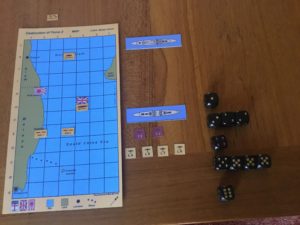
The torpedo bombers were handled in a separate series of rolls.
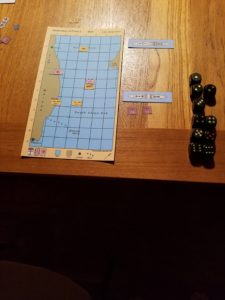
The Prince of Wales somehow survived, taking five hits, two less than the number to sink. Five hits reduced its movement rate to one square per turn. After this mayhem, a surface action occurred. The Japanese battleships and Prince of Wales were unaffected, but the Repulse took one damage hit.
The Repulse was ordered back to Singapore, while the stricken Prince of Wales could only hope for a failed Japanese search, or the intervention of the RAF. The ship was located and the RAF again failed to provide air cover. The level bombers did not find the Prince of Wales, but the torpedo bombers did. An attack by 27 aircraft sank the ship.
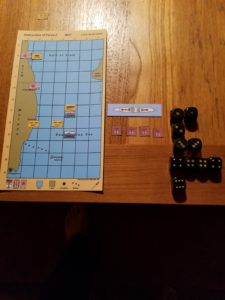
The Repulse continued south during the night (Turn 10), while the Japanese made another landing at Singora.
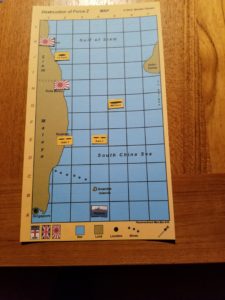
Repulse was able to return to Singapore before the Japanese Turn 11 Search Phase. This ended the game.
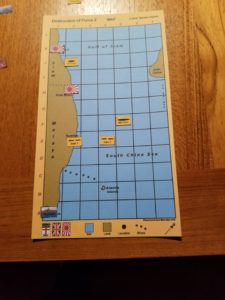
The Japanese victory point total breakdown was:
- +8 Points for sinking Prince of Wales
- +1 Point for one hit on the Repulse
- +1 Point for each Japanese landing
- -2 Points for the sunk convoy
The net is 9 Japanese victory points. The historical total was 18 points.
Wrap-up in the next post.
